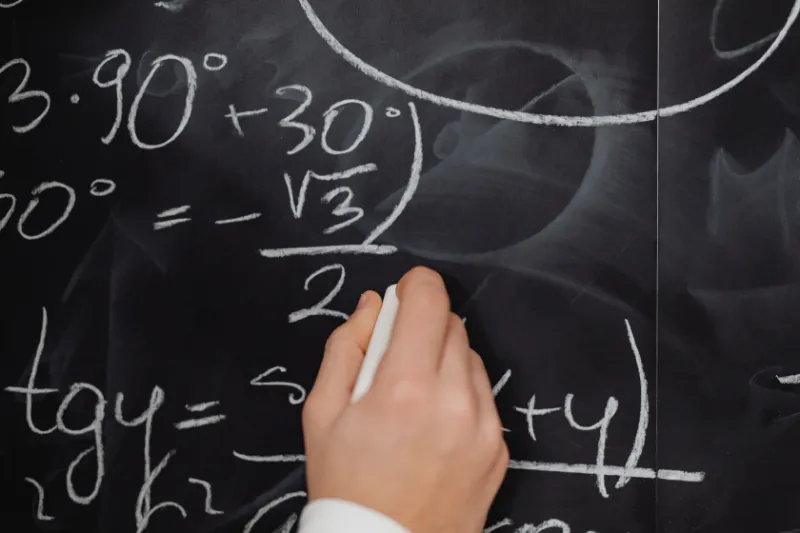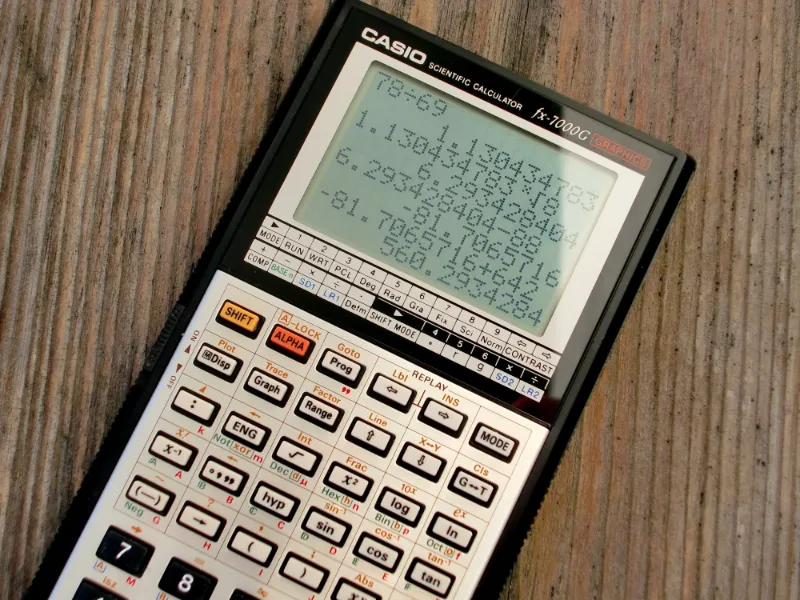Knowing how mathematical concepts function is required to execute complex computations. The standard notation of numbers is required for this purpose because it provides a straightforward method of organizing such calculations. The notation of numbers plays a crucial role in the study of very large or very small numbers.
The standard form of numbers allows scientists to express long measurements and quantities in a precise and accurate manner. While it is more conventional in technical fields the standard form can be used in everyday life when dealing with significant figures.
In this article, we will address the concept of numbers in standard notation. We will delve into its definition and how to write numbers in standard notation. We will elaborate on this notation with precise examples.
What is Standard Notation Numbers?
Numbers in standard notation also known as scientific notation or exponential notation is a way to express very large or very small numbers in a simple and easy format. The general representation of a number in standard form is:
P x 10q
Where
• 1 ≤ P < 10 and sometimes we pronounce it as coefficient.
• q Є ℤ is the exponent of 10 and it can be both positive or negative.
When dealing with astronomical numbers or microscopic measurements such as the distance between celestial bodies like stars or galaxies where astronomical and microscopic values are very high or small accordingly it is very helpful. Scientific notation is frequently linked to the standard form of numbers. The coefficient in standard form is limited to one or more digits but less than 10.
Is Regular Notation the Same as Standard Notation?
Standard notation and regular notation are two methods of writing numbers that have different functions. Regular notation is the most commonly used format in everyday contexts. It is made up of numerals arranged in a straightforward order with no special symbols. In contrast, standard notation is a more compact and economical manner of representing very big or tiny numbers.

It includes two parts: the coefficient, which contains the significant digits, and the exponent, which shows how far the decimal point has moved. When working with numbers that are too large or too little to write or read readily in regular notation, standard notation comes in handy. As a result, while both regular notation and standard notation are valuable tools in mathematics, their responsibilities alter depending on the context and size of the numbers.
Understanding the Notation
To understand numbers in standard notation in a better way let us discuss its main components.
a. Mantissa (Coefficient):
The p in the notation represents the mantissa or coefficient and 1 ≤ p < 10 and q Є ℤ. It consists of the significant digits of the numbers.
b. Power of Ten (Exponent):
The exponent of 10 is represented by the number of digits the decimal point crosses from its initial place to come up in the standard position.
- If the decimal point moves k places to the left we will write the exponent of 10 as 10q.
- If the decimal point moves k places to the right we will write the exponent of 10 as 10q.
How to write Numbers in Standard Notation?
To convert numbers in standard or scientific notation we use the following steps:
1. Identify the Coefficient:
Write down the significant digits of the original number. This forms the coefficient (a).
2. Determine the Exponent:
By shifting the decimal point left or right, the original value of the coefficient can be restored. The exponent of ten indicates how many positions to change. A negative exponent denotes a movement to the right, while a positive exponent suggests a shift to the left. This is how exponents differ in meaning.
3. Write the Standard Form:
Write the coefficient followed by x 10^ and then the exponent. e.g. if you moved the decimal point 4 places to the right and the significant digits were 1.23. The number in standard notation will be as 1.23 x 10-4
Converting Small Numbers
Let us consider the number 0.0000456. To write this number into the standard notation determine the coefficient (4.56) and find the power of ten by counting the decimal places moved (4 places to the right). The given number in standard notation is 4.56 x 10^-5
How does Standard Notation work in practice?
For a large number like 6,500,000 convert it into standard form by identifying the coefficient (6.5) and counting the decimal places moved (6 places to the left). The standard form is 6.5 x 106.
Using an online standard form converter is a best way to write smaller and larger numbers in standard notation.
Example 1:
What will be the standard notation of the number 92,781, 000, 000, 000,000?
Solution:
Step 1: Given information:
Number: 92,781, 000, 000, 000,000 (It is ordinary number)
Step 2: Write down the significant digits of the given number.
92781
Step 3: Put the decimal point between the first two digits.
9.2781
Step 4: Find out the exponent of 10 that is required to bring the coefficient back to the original number and the decimal point will cross 16 digits from right to left to be on the standard position. This will be the exponent of 10.
9.2781 x 1016
Example 2:
What will be the standard notation of the number 0.000000000003492?
Solution:
Step 1: Given information:
Number: 0.000000000003492
Step 2: Write down the significant digits of the given number.
3492
Step 3: Put the decimal point between the first two digits.
3.492
Step 4: Find out the exponent of 10 that is required to bring the coefficient back to the original number and the decimal point will cross 12 digits from left to right to be on the standard position. This will be the exponent of 10.
3.492 x 1012
Is Regular Notation the Same as Standard Notation?
Standard notation, often known as scientific or exponential notation, is a more efficient way of representing very big or minimal numbers. It’s not the same as standard notation, which is how we usually write numbers in our daily calculations. Regular notation is enough in most cases, but standard notation comes in handy when dealing with numbers that are too large or too little to write comfortably.
For example, cosmic scale or microscopic size numbers. Depending on the type of numbers and the situation, each notation system has advantages and downsides. Combining them may extend and enrich our mathematical experience. Here’s a look at how it operates and when it’s useful.
How to Do Standard Notation on a Calculator?
Standard notation is a method of writing extremely big or extremely small integers concisely. In standard notation, a number comprises two parts: the coefficient and the exponent. The coefficient is the component of the number. That contains the significant digits, which are the digits that indicate the precision of the number.
The exponent is a power of 10 that indicates how far the decimal point has moved. To convert a number to standard notation, we must first locate both parts. On a calculator, use the “EE” or “EXP” button, which stands for “times 10 to the power of”. For example, if you have the number 0.000456, you can write it in standard notation as 4.56 x 10-4.

To enter this into a calculator, enter 4.56 EE -4 or 4.56 EXP -4. The number will then be displayed in standard notation by the calculator. When dealing with very large or minimal numbers, this is a critical ability to have because it makes them easier to understand and compare. As a result, instead of being fearful of utilizing your calculator to help you with standard notation, think of it as a tool that can help you improve your mathematical comprehension.
Conclusion
Standard notation is a convenient technique to write extremely big or extremely small integers in a compact format. It is divided into two parts: a coefficient and an exponent. This article demonstrated how to convert any number into standard notation using a straightforward process. Standard notation is helpful for more than just math processes. It also helps us understand the sizes of things in science and everyday life. So, knowing how to use standard writing is essential for getting better at maths and being aware of numbers.


